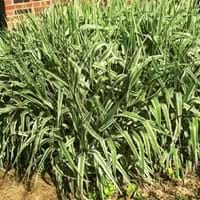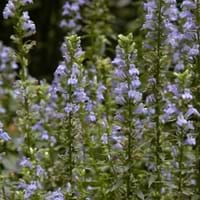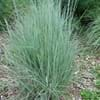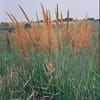Life Span
Perennial
Perennial
Origin
World/Pandemic, Europe
Northeastern United States, Mid-Atlantic United States, Southeastern United States, Central United States, Texas, Canada
Types
not available
Not available
Habitat
Lake margins, Open areas, Stream side, Wet ground
Open areas, stream banks, Wet Woods
USDA Hardiness Zone
4-8
4-8
Sunset Zone
A1, A2, A3, 1a, 1b, 2a, 2b, 3a, 3b, 4, 5, 6, 7, 8, 9, 10, 14, 15, 16, 17, 18, 19, 20, 21, 22, 23, 24
1a, 1b, 2a, 2b, 3a, 3b, 4, 5, 6, 7, 8, 9, 14, 15, 16, 17
Habit
Mat-forming
Clump-Forming
Minimum Width
Not Available
Flower Color
Pink, White
Blue, Lavender, Blue Violet
Flower Color Modifier
Bicolor
Bicolor
Fruit Color
Not Available
Not Available
Leaf Color in Spring
White, Green
Green, Dark Green
Leaf Color in Summer
Light Green
Green, Dark Green
Leaf Color in Fall
White, Green
Green, Dark Green
Leaf Color in Winter
Brown
Light Green
Leaf Shape
Ovate
Lanceolate
Plant Season
Spring, Summer, Fall
Summer, Fall
Sunlight
Full Sun, Partial Sun, Partial shade
Full Sun, Partial Sun, Partial shade
Type of Soil
Clay, Loam, Sand
Clay, Loam
The pH of Soil
Acidic, Neutral, Alkaline
Acidic, Neutral, Alkaline
Soil Drainage
Average
Average
Bloom Time
Late Spring, Early Summer, Summer, Late Summer
Summer, Late Summer, Early Fall
Tolerances
Wet Site, Pollution, Salt, Soil Compaction
Deer resistant, Shade areas, Wet Site
Where to Plant?
Container, Ground, Pot
Ground
How to Plant?
Divison
Divison, Seedlings
Plant Maintenance
Low
Low
Watering Requirements
Reduce watering in winter, Requires regular watering
Do not let dry out between waterings, Needs Very high moisture, Requires consistently moist soil
In Summer
Lots of watering
Lots of watering
In Spring
Moderate
Moderate
In Winter
Average Water
Average Water
Soil pH
Acidic, Neutral, Alkaline
Acidic, Neutral, Alkaline
Soil Type
Clay, Loam, Sand
Clay, Loam
Soil Drainage Capacity
Average
Average
Sun Exposure
Full Sun, Partial Sun, Partial shade
Full Sun, Partial Sun, Partial shade
Pruning
Prune to stimulate growth
Remove damaged leaves, Remove dead branches, Remove dead flowers, Remove dead leaves, Remove deadheads
Fertilizers
Doesn't require fertilization when grown in rich soil
10-10-10, Balanced liquid fertilizer
Pests and Diseases
Not Available
Head smut, Rust, Slugs, Snails
Plant Tolerance
Pollution, Salt, Soil Compaction, Wet Site
Deer resistant, Shade areas, Wet Site
Flowers
Insignificant
Yes
Flower Petal Number
Single
Single
Foliage Texture
Medium
Medium
Foliage Sheen
Matte
Matte
Attracts
Bugs
Bees, Birds, Butterflies, Hummingbirds
Allergy
Not Available
Skin irritation, Skin rash, Toxic if not prepared properly
Aesthetic Uses
Ground Cover, Showy Purposes
Beautification, Cottage Garden, Showy Purposes
Beauty Benefits
Not Available
Skin Problems
Environmental Uses
Air purification, Food for insects
Air purification
Medicinal Uses
Not Available
Diarrhea, Dysentry, Healing, Stomach pain, Syphilis
Part of Plant Used
Whole plant
Bark, Flowers, Leaves, Root
Other Uses
Biodiesel
Used as Ornamental plant, Used for its medicinal properties
Used As Indoor Plant
No
No
Used As Outdoor Plant
Yes
Yes
Garden Design
Container, Mixed Border
Mixed Border, Wildflower
Botanical Name
PHALARIS arundinacea var. picta
LOBELIA siphilitica
Common Name
Canary Reedgrass, Ribbon Grass
Great blue lobelia, great lobelia
In Hindi
Ribbon Grass
महान ब्लू लोबेलिआ
In German
rohrglanzgras
Great Blue Lobelia
In French
roseau
Great Lobelia bleu
In Spanish
hierba cinta and pasto cinto
Gran Lobelia azul
In Greek
κορδέλα Grass
Μεγάλη Μπλε Lobelia
In Portuguese
caniço-malhado
Grande Lobelia azul
In Polish
Wstążka Trawa
Great Blue Lobelia
In Latin
Ribbon Grass
Blue Lobelia
Phylum
Magnoliophyta
Magnoliophyta
Class
Liliopsida
Magnoliopsida
Order
Cyperales
Campanulales
Family
Poaceae
Lobeliaceae
Clade
Angiosperms, Commelinids, Monocots
Angiosperms, Asterids, Eudicots
Tribe
Not Available
Not Available
Subfamily
Not Available
Lobelioideae
Number of Species
Not Available
Importance of Ribbon Grass and Great Blue Lobelia
Want to have the most appropriate plant for your garden? You might want to know the importance of Ribbon Grass and Great Blue Lobelia. Basically, these two plants vary in many aspects. Compare Ribbon Grass and Great Blue Lobelia as they differ in many characteristics such as their life, care, benefits, facts, etc. Every gardener must at least have the slightest clue about the plants he wants to plant in his garden. Compare their benefits, which differ in many ways like facts and uses. The medicinal use of Ribbon Grass is Not Available whereas of Great Blue Lobelia is Diarrhea, Dysentry, Healing, Stomach pain and Syphilis. Ribbon Grass has beauty benefits as follows: Not Available while Great Blue Lobelia has beauty benefits as follows: Not Available.
Compare Facts of Ribbon Grass vs Great Blue Lobelia
How to choose the best garden plant for your garden depending upon its facts? Here garden plant comparison will help you to solve this query. Compare the facts of Ribbon Grass vs Great Blue Lobelia and know which one to choose. As garden plants have benefits and other uses, allergy is also a major drawback of plants for some people. Allergic reactions of Ribbon Grass are Not Available whereas of Great Blue Lobelia have Skin irritation, Skin rash and Toxic if not prepared properly respectively. Having a fruit bearing plant in your garden can be a plus point of your garden. Ribbon Grass has no showy fruits and Great Blue Lobelia has no showy fruits. Also Ribbon Grass is not flowering and Great Blue Lobelia is flowering. You can compare Ribbon Grass and Great Blue Lobelia facts and facts of other plants too.





